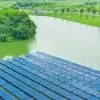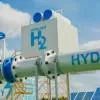Development Goals
01 Oct 2019
4 Min Read
Editorial Team
Airports Authority of India embraces GRIHA yardsticks in building airports.As part of commitment to quality and sustainability, a certification of 4-star rating under the GRIHA guidelines has been established as a project goal for each project of the Airports Authority of ...
Read full article
Try CW Gold Subscription at 167/Month
CW Gold Benefits
- Weekly Industry Updates
- Industry Feature Stories
- Premium Newsletter Access
- Building Material Prices (weekly) + trends/analysis
- Best Stories from our sister publications - Indian Cement Review, Equipment India, Infrastructure Today
- Sector focused Research Reports
- Sector Wise Updates (infrastructure, cement, equipment & construction) + trend analysis
- Exclusive text & video interviews
- Digital Delivery
- Financial Data for publically listed companies + Analysis
- Preconceptual Projects in the pipeline PAN India



















